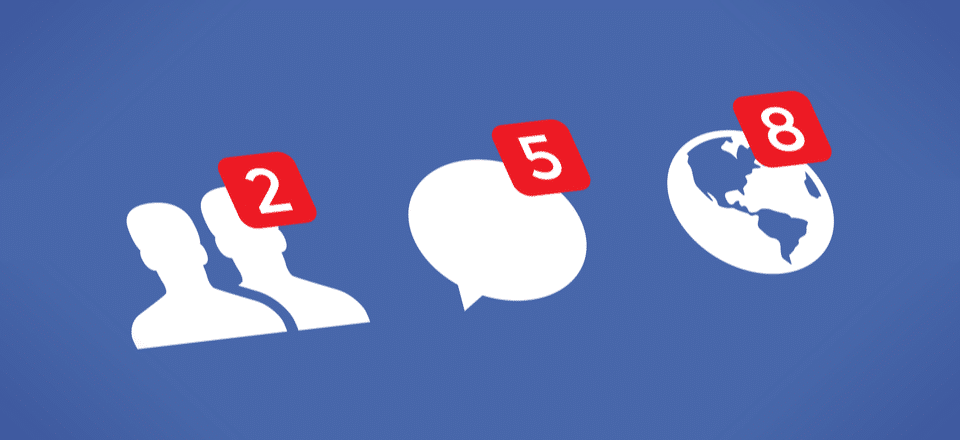With our post on market segmentation in place, this is a comprehensive yet simple guide into demographic segmentation and all that comes with it. It covers understanding how demographic segmentation works with examples and a guide for implementation.
Overview
A single marketing campaign will almost certainly not appeal to everyone. This is because what piques the attention of a single 18-year-old college freshman will be vastly different from what piques the interest of a 45-year-old attorney who is married with children.
So understanding these similarities and variances allows you to segment the market into distinct categories and develop unique selling features for each. And because you can only serve smaller, more focused groupings, your campaigns become more exact.
Without further delay, let’s dive in…
Demographic Segmentation Explained
Demographic segmentation is the classification of a target market based on certain factors such as age, education, and gender. It is a type of market segmentation that enables firms to better understand their customers and meet their demands.
Demographic segmentation enables organizations to be more strategic and targeted in their marketing efforts. A one-size-fits-all marketing strategy will almost certainly fail to appeal to every member of your target market since different people have varied tastes — what appeals to Consumer A may not appeal to Consumer B.
In other words, organizations would need to create specific marketing efforts for each group by segmenting their target market into individual demographic categories. This allows them to better channel resources and increase the return on marketing spending.
Why Is Demographic Segmentation Important?
It is practically impossible to grasp what your clients desire without demographic segmentation. Demographic segmentation enables businesses to divide their large client base into smaller groups of people and appeal to their distinct interests.
Businesses often use demographic segmentation to generate unique brand narratives that easily connect with certain parts of the target market in order to advertise and sell their product or service. Consumers readily identify with personalized brand narratives and are willing to support businesses that represent this.
Furthermore, businesses lessen the risk of conducting advertising to uninterested consumers, resulting in a rapid boost in ROI. In fact, according to statistics, email marketers who often segment their email marketing see at least a 760 percent boost in conversion and income. In the United States, however, 85 percent of new product launches fail to generate the targeted income due to insufficient segmentation.
But asides from increased ROI, demographic segmentation enables you to:
#1. Create Long-Term Consumer Relationships
Like we earlier mentioned, reaching out to your customers on a more personal level through demographic-based tailored marketing fosters greater client loyalty. It allows consumers to identify with your brand and feel as if you were an advocate for their needs. This increases the likelihood that they will do business with you for a longer period of time.
#2. Boost Your Products and Services
Having satisfied customers motivates you to reconsider your products and services. When you have a better understanding of your target audience, you can better serve them by putting yourself in their shoes. If you create fitness programs and know that the majority of your clients want the same type of program, you’re more likely to make it happen.
#2. Improve your Marketing Strategies
Demographic segmentation enables you to be more targeted in your marketing strategy. It clarifies your vision, gives you greater direction for future advertising efforts, and helps you maximize your resources, time, and budget. If 85 percent of your clientele are between the ages of 20 and 35, this is the demographic you want to target. It would be a waste of your time and money to devote your time and resources to elders.
What’s the Difference Between Segmentation and Targeting?
It’s critical to understand that segmentation and targeting are not the same thing, even if they can be closely related.
Market segmentation is not about targeting specific clients, but rather about grouping people together based on the characteristics they share. Demographic segmentation helps you to collect information about your clients in order to determine the best approach to promote your goods or services to them.
After you’ve segmented your market, you might consider targeting a segment. Targeting is the action of looking at an already established market segment and asking yourself how you might particularly reach them.
The STP marketing model is one method to better explain how segmentation and targeting differ yet complement one another.
STP (Segmentation, Targeting, Positioning) is a three-step process that incorporates each of the aforementioned strategies to narrow in on and successfully market to consumers.
Read Also: Target Marketing: All you need to know
First, we use market segmentation strategies to segment the audience.
Following that, we decide which of those segments to target.
Finally, we use this data to drive our positioning and select the most successful marketing mix to reach the target population.
In practice, this could look like a hypothetical food corporation segmenting its market by age group. When they look at sales across different segments, they may notice that 25-30 year-olds do not buy as many yogurts as older segments. In order to remedy this, they would try to target their marketing to people aged 25 to 30.
After deciding on this segment as its target, the company can begin working on its positioning to make it younger, as well as its marketing mix to reach the audience through the channels they like.
The Goal of Demographic Segmentation
A successful segmentation study’s goal is to classify big, varied groups into smaller markets that might be more responsive to a targeted product or message.
Demographic segmentation is not a one-time event. Different types of segmentation are beneficial to diverse businesses and products, and you may find yourself segmenting your audience in different ways at different periods.
For example, if you’re conducting market research in preparation for the launch of a new family automobile, you’ll be highly interested in the size of people’s homes, the age of their children, where they reside, their work status, and their spending capacity. If you’re conducting market research for a luxury convertible, you’ll be looking at your customer through a whole different lens.
Advantages of Demographic Segmentation
The following are advantages when it comes to demographic segmentation.
#1. Better Personalisation
You can deliver various messaging to different groups in a segmented market. An automobile, for example, may be advertised to parents as a family-friendly vehicle, whereas couples who do not have children may be presented with other benefits, such as its suitability for lengthy driving holidays.
#2. Greater Product Relevance
You can ensure that people who view your advertisements are shown products that are more relevant to them. Demographic marketing is very useful for promoting specific products to the right clientele.
For example, an advertisement showcasing a non-halal meat product to a Muslim may risk isolating the customer and discouraging future purchases from you.
I#3. Increased Effectiveness in Advertising
To expand on the preceding example, you’ve also squandered your marketing budget by advertising non-halal goods to a Muslim, who will never be a purchasing customer. Demographic segmentation enables you to target the most relevant customers while minimizing losses in your ads budget, resulting in higher ROAS and lower CACs.
Is Demographic Segmentation the Appropriate Choice for Me?
In a nutshell, it depends. Demographic segmentation is not always the most effective technique to segment a market. It’s critical to consider what you’re selling, the size of your company, and who you’re selling to. It’s possible that other tactics would be more effective.
If you are an online clothing company, you should assess whether you have adequate data to apply behavioral marketing, which could provide even more customization opportunities.
A company that only has the infrastructure to serve a limited area may benefit more from geographic segmentation, but a company that offers hobby-centric products like canoes or rock-climbing equipment may gain more from psychographic segmentation.
The Drawbacks of Demographic Segmentation
As previously stated, employing demographic segmentation may not be the best option for everyone. Its usefulness is limited because you are simply focusing on basic data that excludes actual client behaviors and desires.
#1. Range Restrictions
Just because two people are in the same demographic group does not imply that they want the same things. You should also be aware that there are psychological and geographical factors to consider when it comes to conversions.
#2. Using Incorrect Demographic Variables
In some cases, it will be counterproductive to employ every demographic variable available. Don’t do it. For example, if you sell high-end luxury items, segmenting your market based on income makes sense. If you sell food, gender segmentation may not be the most beneficial variable to employ.
Demographics will always be crucial in defining your target consumer, but it’s critical to combine demographics with other sorts of market segmentation to get the full picture.
Demographic Segmentation Variables
Now when we mean variables, we basically mean factors you’d need to consider moving forward with demographic segmentation.
#1, Age
This is a significant aspect of market demographic segmentation because consumers’ requirements and preferences vary with age. That is, what appeals to people of a certain age group may not appeal to someone of a different age group.
Young folks, for example, prefer digital marketing strategies, whilst older adults prefer traditional marketing approaches. Knowing the age distribution of your users helps you build goods that appeal to them more than marketing methods.
Age can be segmented based on life cycle stages or generations. Life cycle segmentation comprises age categories such as babies, teenagers, and adults, as well as generation phases such as late bloomers, millennials, and generation.
In certain cases, the life cycle stage is regarded as a distinct demographic category since it defines the special needs of customers throughout a specific stage of life. Toddlers’ preferences for various foods and adults’ preferences for certain attire are two age demographic market segmentation examples.
#2. Gender
Another essential demographic variable for market segmentation is gender. This is because people identify with different points on the gender spectrum, such as masculine or feminine, and this influences their decisions. Knowing which gender your product appeals to allows you to efficiently address the needs of your customers.
The broad overview of the market, product choices, and distinction are frequently influenced by one’s gender identification. Men, for example, may choose deodorants with a strong smell, whilst ladies may prefer deodorants with a gentle and enticing fragrance. These two gender demographic market segmentation examples also explain the need for segmentation in the first place.
#3. Income
Income levels are also a significant demographic element since they influence customer choices and pricing perceptions. Individuals with higher income levels may like to buy flashy or expensive products, whereas those with lower income levels may prefer to buy cheaper items.
The target market’s income levels also influence product pricing, as you don’t want to price yourself out of business. Companies that deal in luxury products often target high-income customers who they know can afford them and price their products accordingly, whereas companies that deal in ordinary items stress affordability.
#4. Levels of Education
Your marketing strategy and product characteristics are heavily influenced by your customers’ levels of education. In advertising, for example, the educational level of the target market influences the method and channels used to convey your message.
Furthermore, the complexity of products and product features is heavily influenced by the target market’s educational level. Complex product characteristics may not appeal to consumers with low to medium levels of knowledge, whereas extremely simple product features may not appeal to a highly educated audience.
#5. Religion, Race, and Ethnicity
Religion determines the preferences of the target market, hence it is crucial to understand your target market’s religious categorization. Racial and ethnic preferences and attitudes are also represented in product and service marketing campaigns and advertorials.
#6. Occupation or Job Description
Organizations can design products for specific industries by categorizing consumers based on occupations or job categories. Occupation segmentation, which is sometimes associated with income segmentation, can also help split groups of people into specific locales such as cities, suburbs, and rural areas.
#7. Family
Demographic segmentation relies heavily on societal family systems. In this perspective, civilizations with big families may prefer low-income products that can be purchased in bulk, whereas societies with fewer families and a majority of single people may prefer luxury purchases with flexible spending habits.
Employment status, location, marital status, and household income are some of the other demographic segmentation characteristics.
Types of Demographic Segmentation with Examples
Age Group Segmentation
Age is segmented by generation or life cycle stage. When done by generation, the various stages include millennials, generation Z, and baby boomers. When done by life cycle stage, the many categories include infants, teenagers, adults, and the elderly.
Companies that sell soft drinks, such as Coca-Cola, frequently target young adults aged 15 to 25 by showing youthful men or women in their marketing campaigns.
Gender Segmentation
Individuals identify as feminine or masculine at various positions on the gender spectrum. Their gender will often influence their tastes and purchase decisions. Understanding which genders your products/services appeal to allows you to target your marketing techniques to the appropriate audience.
Gender Demographic Market Segmentation Examples
Just like we mentioned earlier, several firms that sell deodorants for males will frequently deploy marketing campaigns that represent a man wearing their deodorant and instantly becoming appealing to the ladies around him. They do so because most guys get a high sense of fulfillment when women are drawn to them. These commercials attempt to show males that this deodorant may provide them with quick gratification.
Income Segmentation
Income segmentation is critical since a person’s income influences their purchasing decisions and pricing perceptions. Individuals with lesser incomes will choose to purchase products that are inexpensive or moderately priced, whilst those with higher incomes may be more interested in purchasing high-end and luxury items.
Income Demographic Market Segmentation Examples
Luxury clothes businesses often advertise their items in luxury lifestyle periodicals aimed at high-income consumers. These firms rarely employ popular marketing methods, such as TV commercials, which are seen by the general public. This not only promotes their brand’s exclusivity but also allows them to cut their spending because they are just focusing on their target market.
Family Segmentation
Individual tastes can be influenced significantly by societal family arrangements. People with larger families may prefer to buy cheaper things in order to save money. Smaller families and single persons, on the other hand, may have more flexible purchasing habits and choose premium or luxury products.
Family Demographic Market Segmentation Examples
A ton of jewelry retailers, for example, target recently engaged couples and depict serious relationships in their ad campaigns. This is due to the fact that jewelry is frequently acquired by couples who are preparing to marry. These advertisements will attempt to portray loving couples who are ready to take the next step in their love and are hunting for the perfect rings to symbolize their commitment.
Segmentation Based on Race and Religion
Businesses must understand their target market’s religious categorizations because religion might impact preferences.
Furthermore, nationality and ethnicity can have a substantial impact on preferences. Such segmentation is especially widespread in the food industry, as many enterprises in this industry sell food from specific cuisines.
Race and Religion Demographic Market Segmentation Examples
Some restaurants in Western countries that serve Asian food are attempting to attract Asian ex-pats who live in these countries. They frequently target this group by emphasizing the freshness of their meals.
Education-Based Segmentation
Education levels influence the desirability of product characteristics. Like we mentioned earlier, extremely simple product features may not appeal to a well-educated audience, whereas complicated product features may not appeal to consumers with low to medium levels of education.
Education-Based Demographic Market Segmentation Examples
Computer businesses that sell laptops have recognized college students as a big portion of their target market. They attempt to target this group by providing promotional offers to college-going students, such as a discount on their laptops provided they can present proof of enrollment (such as university identification cards).
Demographic Segmentation: A Step-by-Step Guide
Now the question is, how do you go about this?
Determine Your Target Market:
These are the people who require your goods or service. You can conduct a market research survey to gain insights into consumer wants and how your product meets these needs.
Divide Your Proposed Target Market Into Broad Demographic Groups
For example, you can segment the market widely based on demographic data such as age groups and gender.
You can also obtain demographic data from publicly available data sources such as demographic resources.
Examine Your Data
Following the collection of various data sets from your clients, the information must be analyzed to identify unique demographic tendencies in your target market.
You may use a reports summary tool to create bespoke visual reports using your form data.
Divide the existing divisions into smaller groups by adding other demographic characteristics such as family size and occupation.
Repeat the preceding steps until you have defined demographic segments for your product.
Where Can You Find Demographic Information on Your Customers?
You most likely already have some information about your current and potential consumers that may be used for segmentation. This could be from the information they’ve shared directly, such as name, date of birth, and address, or from a third-party demographic marketing data service that uses sources such as browser cookies and information from digital apps and online platforms to provide you with a more complete picture of your target audience.
If you require further information, there are two basic methods for gathering market demographics: public records and private surveys.
#1. Public Records
Because demographic data is so freely accessible through public resources, it is usually the simplest kind of segmentation data to obtain. The majority of developed countries and several international organizations have reliable demographic resources, such as:
- USA.gov
- United Nations Population Division
- Australian Bureau of Statistics
- Statistics Canada
- UK Census Data
- US Center for Economic Studies
- US Census Data
#2. Private Survey
A lot of marketers believe that surveys are the most effective way to obtain demographic information about their customers and prospects. This is frequently accomplished by tagging demographic questions onto a survey intended for another purpose, such as post-purchase feedback or contact center follow-up.
If you decide to collect market demographics through surveys, it’s best to save your demographic questions for the end because respondents may not want to answer them (especially questions about income, ethnicity, religion, and so on), and you don’t want them to abandon the survey before they get to your core questions.
It is critical to pose demographic questions in a way that does not offend, does not bias the respondent, and does not generate misunderstanding.
Some data points are more sensitive than others; for example, people may be hesitant to reveal information about their age, sexual orientation, ethnicity, or religion. Include a “prefer not to say” option in your survey questions so that respondents can skip items as they see fit.
Here are some examples of demographic questions to ask:
- What’s the highest level of education you have completed?
- No formal qualification
- High school
- Vocational / trade / technical school
- Some college
- Bachelor’s degree
- Advanced degree
- Prefer not to say
- Which of the following best describes your current relationship status?
- Single
- Married or engaged
- Divorced or separated
- Widowed
- Prefer not to say
- Income information is critical for us to comprehend. Please provide your best guess. Please select the answer that includes your full household income before taxes in (prior year).
- Less than $10,000
- $10,000 to $19,999
- $20,000 to $29,999
- $30,000 to $39,999
- $40,000 to $49,000
- $50,000 to $59,999
- $60,000 to $69,999
- $70,000 to $79,999
- $80,000 to $89,999
- $90,000 to $99,999
- $100,000 to $149,000
- $150,000 or more
- Prefer not to say
How to Use Demographics for Segmentation Research
When attached to a poll regarding interest in your brand or product, demographics might be a useful approach to obtain more information.
You can determine which groups are most and least receptive by connecting demographic questions at the conclusion of your survey and generating a banner or crosstab report.
You might find, for example, that:
- Single college-educated women are the most likely to try your product.
- At the age of retirement, interest in your product often declines.
- The presence of children in the home increases a customer’s likelihood of purchasing by thrice.
- Men under the age of 21 prefer to contact sales via an app rather than by phone.
- Your brand has the highest unaided awareness among high-income consumers in the Pacific Northwest.
Following demographic segmentation, the next step is
Demographic segmentation is an important part of any effective marketing plan, but don’t fall into the trap of depending solely on demographics to define distinct groups. To truly dive deep, you must also consider habits and psychographics. Sales data, clicks, social media participation, and store visits are all examples of behaviors. Values, brand choices, political beliefs, attitudes, and perceptions are all examples of psychographics.
When demographics, habits, and psychographics are combined, a powerful marketing triangle is formed that will drive your product design, channel strategy, pricing philosophy, and brand messaging.
Demographic Segmentation FAQs
What is demographic segmentation example?
Toddlers’ preferences for various foods and adults’ preferences for certain attire are two examples of demographic segmentation. Another essential demographic aspect for market segmentation is gender because people identify with different points on the gender spectrum, such as masculine or feminine, and this influences their decisions.
What are the 6 types of demographics?
Types and examples of demographics include;
- Age.
- Gender.
- Occupation.
- Income.
- Family status.
- Education.
What are the 4 main segmentation groups?
The four primary categories of market segmentation are demographic, psychographic, behavioral, and geographic segmentation, although there are many other tactics you can apply, including several variations on the four main types.






